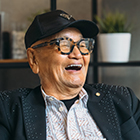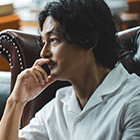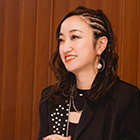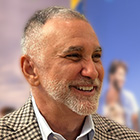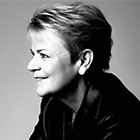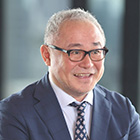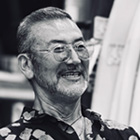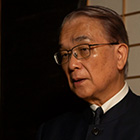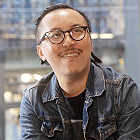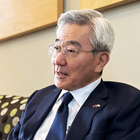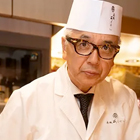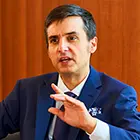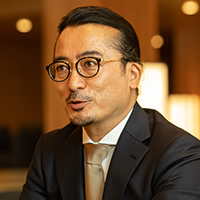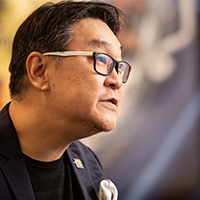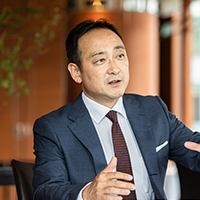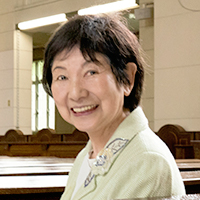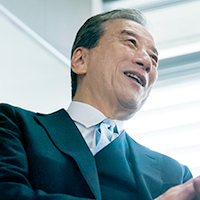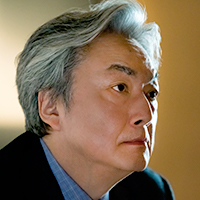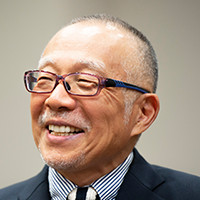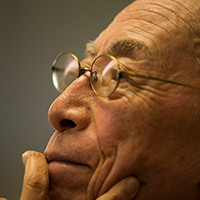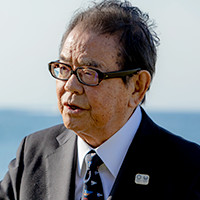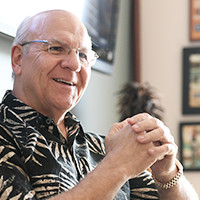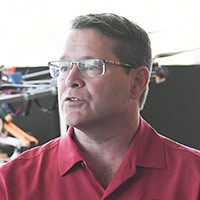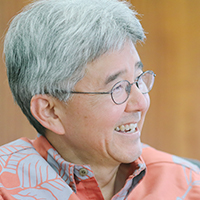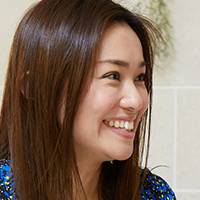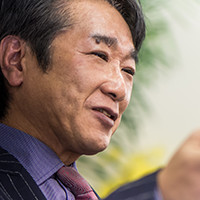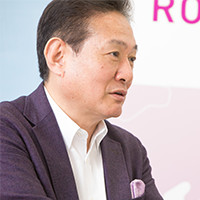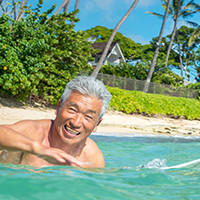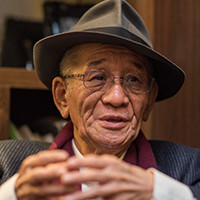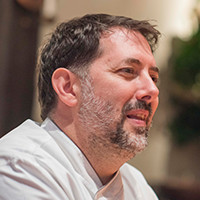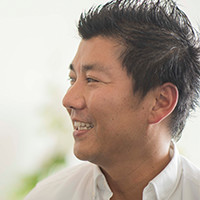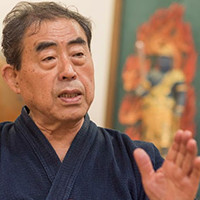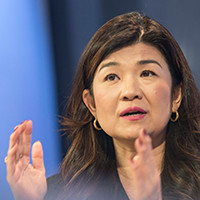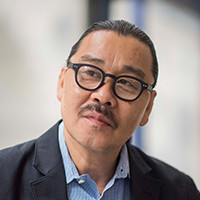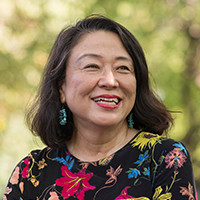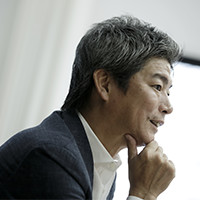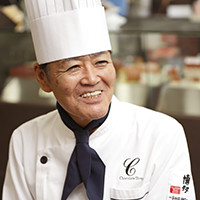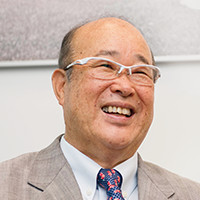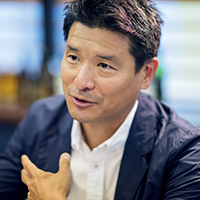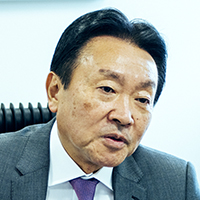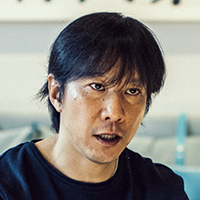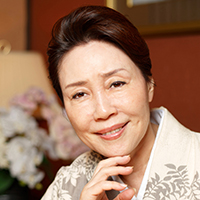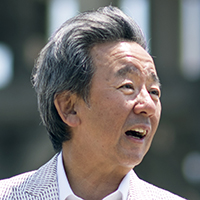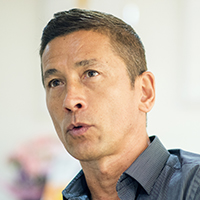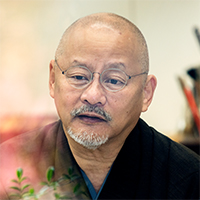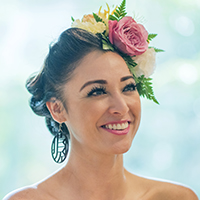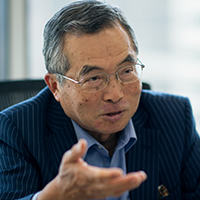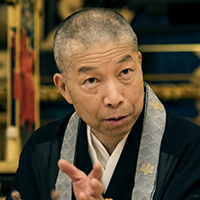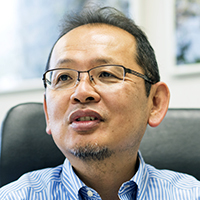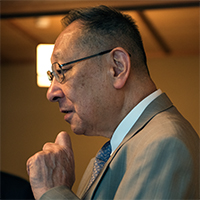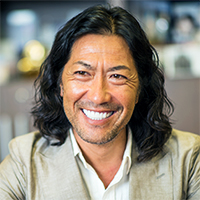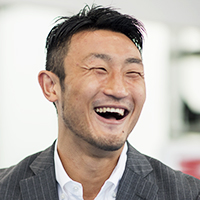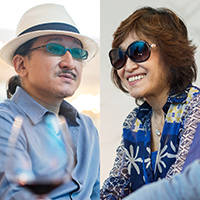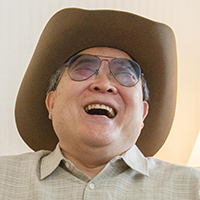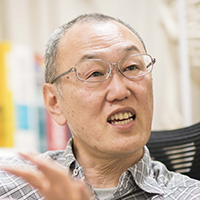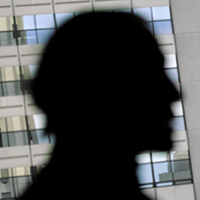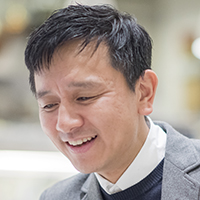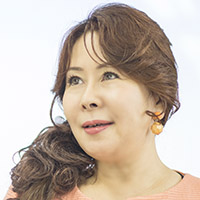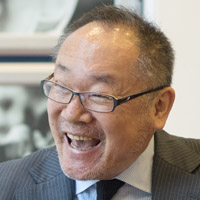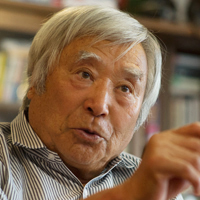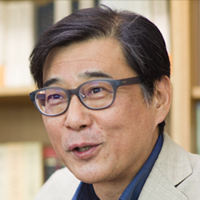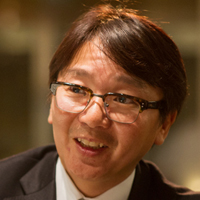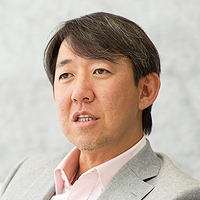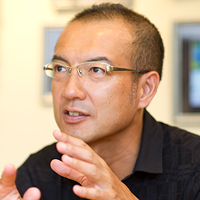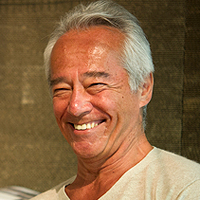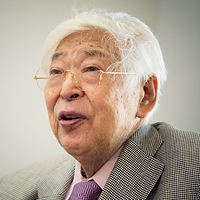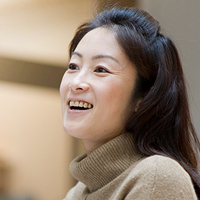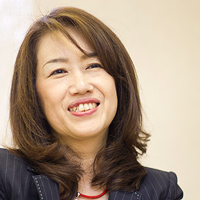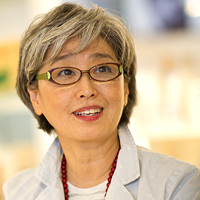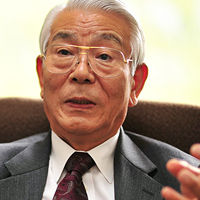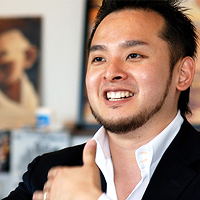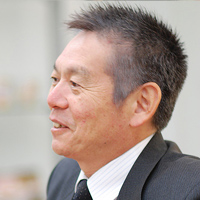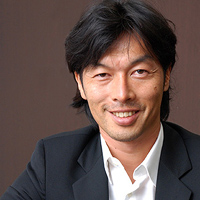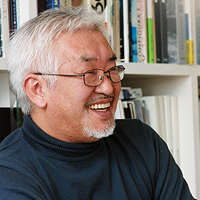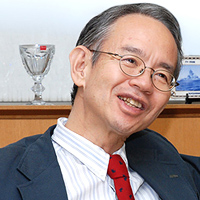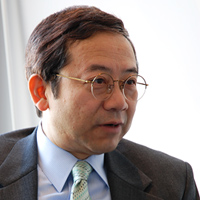
As a foremost expert in caricature in Japan and a globally recognized artist, Mr. Kage has made a name for himself not only as an entertainer who brings joy to people of all ages but also as a compassionate supporter of children worldwide through his volunteer work. We had the privilege of speaking with Mr. Kage while he graciously shared his insights and demonstrated his artistry in caricature.
Profile
Vol.6 Kage
President and Representative Director of Caricature Japan, Ltd., and Representative Artist | Asian Ambassador for the National Caricaturist Network (NCN)
Based in San Diego, California, as a caricaturist and portrait entertainer, he has drawn tens of thousands of people at over 500 events across the United States. Notably, as a foreigner, he has achieved remarkable feats, such as setting up service booths inside Major League stadiums. He is a recipient of 19 awards, including winning the 2007 National Caricaturist Network(NCN) Caricaturist of the year and the NCN European International Contest of Caricature. In 2007, he was selected as one of the “100 Japanese People The World Respects” by Newsweek magazine. Currently, he is actively involved in a wide range of activities through caricature, including managing 11 stores primarily in the metropolitan area, creating commercial illustrations for businesses, commissioned works for individuals, producing illustrations for magazines, and appearing in various media.
*Titles and affiliations are as of May 2009, when the interview was conducted.
Caricature art
Caricature is a unique artistic method that goes beyond merely resembling the subject; it also expresses the inner character of the motif. Generally, when people think of portraits, they imagine either realistic portraits that closely resemble the subject or cartoonish depictions that are cuter than the actual person. However, caricature involves the addition of exaggeration, design, and humor to express the model’s charming points and individuality. This is why I place the utmost importance on the preliminary sketch in caricature. The purpose of the sketch is not to prevent mistakes, but to capture the first impression. Therefore, I do not spend more than 30 seconds on it. If it takes longer than 30 seconds, you start to see too much detail, making judgment difficult. Once I decide on the shape, I draw boldly and decisively without hesitation. Generally, the first impression does not lie. If you see too much and start to hesitate, the drawing becomes blurred, and you lose the likeness.
Trial and error

When I returned to Japan in 2002 and began my activities here, I realized that directly importing my approach was not going to work. It seems that many Japanese people desire to be depicted in a cute manner. Even when I explained what caricature is, it was difficult to get the concept across, and there were days of trial and error. It was during this time that I hit a wall and started to rethink what caricature truly means. The parts that are visually striking and make an impression can sometimes be the very aspects that a person is self-conscious about. Having these features exaggerated can be hard for the person to accept.
For example, even if the artist sees a large mouth as a characteristic trait, if the person is self-conscious about it and cannot accept the exaggeration, I adjust the angle to avoid extreme exaggeration. The answer I arrived at after much trial and error was to find “true likeness = the essence of the person.” I don’t just see them as subjects; I aim to capture and draw the personality and sensibility that radiate from within. Caricature is not about highlighting flaws but discovering and expressing what makes someone unique. While drawing a portrait exactly as requested can make someone happy, I want to convey something more profound through caricature. Being able to touch someone’s heart by capturing something invisible is also a source of joy for me.
Encountering One’s True Calling

From a young age, I was the epitome of frailty, necessitating bi-weekly hospital visits for injections aimed at improving my constitution. Regardless of how tough or authoritative I tried to be, physical education and lunchtime were stark reminders of my vulnerabilities. It was during such times that I stumbled upon a book about a professional wrestler, sparking an admiration for strength that would grow within me. Driven by a desire to become stronger, I dedicated myself to physical training, took up wrestling in high school, and upon graduation, ventured to the United States with ambitions of becoming a professional wrestler. Although I aimed to debut as a wrestler who had trained abroad, my stay in the US felt more like a journey of self-discovery. Immersing myself in a new world, I was desperate to reinvent myself as a stronger person.
My first encounter with caricature art was during a family trip to Las Vegas in my childhood. The “funny portraits” I saw, unlike anything I had encountered before, were incredibly captivating and left a lasting impression on me. Having always enjoyed drawing, I continued to sketch in my own style even while undergoing the rigorous training of a wrestler, finding solace in caricature during the challenging days of practice in an unfamiliar land. The time I spent sketching at a café, savoring a cup of coffee between language school and the gym, became my only respite, a precious moment of peace for my soul.
Transitioning from a Different Industry
In a world brimming with talented and exceptional artists, the question of how someone like me, who had devoted their life to martial arts, could carve out a future as an artist was daunting. The only option seemed to be to keep drawing relentlessly. I took paper and pen with me everywhere, constantly sketching whatever I could. Two months after I started assisting a caricaturist, I was unexpectedly called to fill in at an event due to a sudden vacancy. I was overjoyed at the opportunity to debut and drew with all my might, keen not to offend anyone.
However, we are entertainers as much as we are artists. Live sketching isn’t just about effort; it needs to be done with joy. Although there were about five artists at the venue, the guests gravitated towards those who sketched with evident enjoyment, leaving me feeling incredibly frustrated. As I prepared to leave the venue with mixed feelings of happiness for having made my debut and disappointment at not performing as well as I hoped, the guests I had drawn gave me a standing ovation. That moment of emotional impact is something I’ll never forget. It was then I decided to pursue this path, to hone my skills further and aim to become an artist who brings joy to many people.
My Philosophy

The protagonist of a caricature is always “the person.” Throughout my life, I will continue to face and depict people. My goal is to create caricatures of as many fascinating individuals as possible, to have these works viewed and enjoyed, and to evoke feelings in a wide audience. Moreover, it’s about immortalizing the lives and times of the models as something valuable. I believe this to be my mission as a caricature artist.
My dream is to meet as many people as possible through caricature, to provide laughter, emotion, and surprises, contributing to a brighter society and the happiness of people. I aspire to elevate caricature beyond a unique art form to a culture that enriches the human spirit. To this end, I have started focusing on educational initiatives this year. Whether as a lifelong hobby, a communication tool that benefits one’s business, or a serious pursuit of a professional career, I’ve established classes to cater to various goals. I would be thrilled if, one day, “caricature” could become a part of the art curriculum in schools. I am also planning to establish a Caricature Museum in the future, further contributing to this vision.
As someone of the same generation, I have found Mr. Kage’s dedication to cherishing each moment and living each day to the fullest profoundly inspiring. Even having become the world champion in a caricature art global competition, I deeply resonate with his continual positive attitude towards taking on challenges. I hope many more people will experience the emotional and entertaining art of caricature. I wish Mr. Kage, along with all the artists at Caricature Japan, even more success in the future. Thank you very much for taking time out of your busy schedule today.
May 2009 at Caricature Japan, Ltd., Edited by Naomi Kusuda, Photographed by Daiki Ayuzawa





